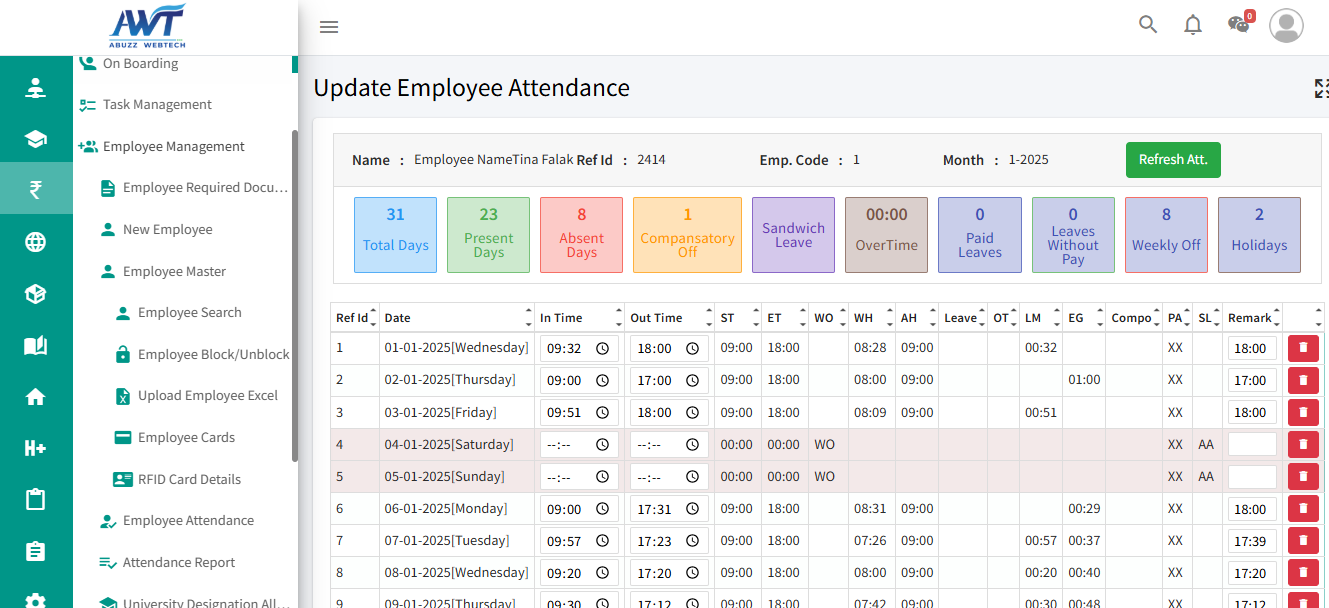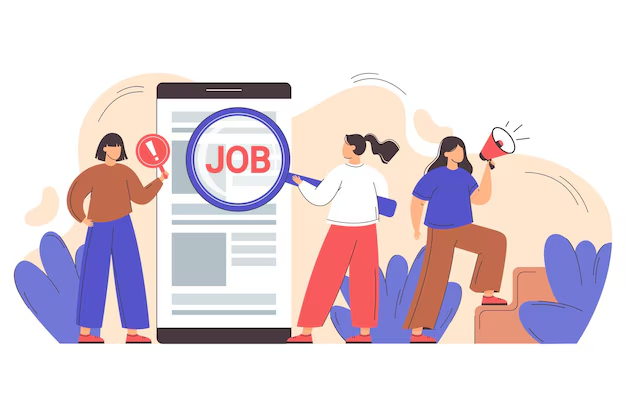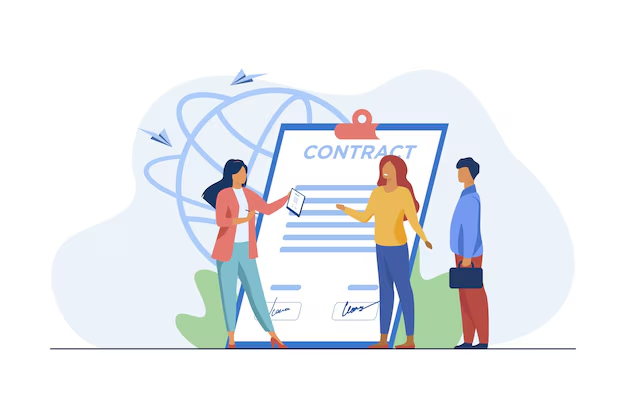Human resource management system
A Human resource management system helps track, assess, and improve the performance of both students and faculty within the autonomous college setting.
Human resource management system

Comprehensive ERP features for HRMS:-
-
Employee ManagementEmployee profiles & records, Onboarding & offboarding management, Document storage & verification, and Role-based access control.
-
Recruitment & Applicant TrackingJob posting & application management, Resume parsing & candidate screening, Interview scheduling & feedback tracking, and Offer letter generation.
-
Payroll ManagementAutomated salary calculations, Customizable salary structures (fixed, hourly, commission-based), Direct deposit & payment processing.
-
Attendance & Time TrackingBiometric & RFID attendance integration, Timesheet management, Shift planning & scheduling, and Overtime & leave tracking.
-
Leave & Absence ManagementEmployee self-service leave requests, Leave balance tracking, Holiday & time-off policies, and Approval workflows.
-
Performance ManagementGoal setting & tracking, 360-degree performance reviews, Employee appraisal & feedback, and KPI & productivity tracking.
-
Training & DevelopmentLearning management system (LMS) integration, Employee skill tracking, Training schedules & certification management, and E-learning modules & assessments.
-
Employee Self-Service PortalPayslip & tax document access, Leave & attendance tracking, Profile updates & document submissions, and Internal communication & announcements.

Job position and description
A job position and description outline the role, responsibilities, qualifications, and expectations for a specific job within an organization. The job position defines the title and scope of the role, while the description details the key tasks, duties, and required skills.
The job description helps potential candidates understand what the role entails and whether they are a suitable fit for the position.

New enquiries
New enquiries refer to incoming questions, requests, or expressions of interest from potential customers, clients, or users about a product, service, or opportunity.Addressing new enquiries promptly and effectively is crucial for providing information, clarifying doubts, and guiding potential clients toward making decisions.
The process often involves capturing relevant details, responding to questions, and determining the next steps to move the enquiry toward a potential sale or partnership.

Shortlist candidate
Shortlisting a candidate involves selecting individuals from a pool of applicants who best meet the qualifications, skills, and experience required for a specific job position.It is typically based on the evaluation of resumes, cover letters, and application forms, and sometimes includes an initial interview or assessment.
The goal of shortlisting is to identify the most promising candidates who will move forward in the recruitment process, often for more in-depth interviews or further evaluations.

Calling process
The calling process refers to the steps involved in reaching out to candidates, clients, or stakeholders via phone for a specific purpose. In a recruitment context, it often involves contacting shortlisted candidates to invite them for interviews or discuss their application status.
The process generally includes preparation, making the call, conveying the necessary information, and handling responses.

Interview process
The interview process is a series of steps through which employers assess candidates for a job position. It typically begins with the selection of candidates from a pool of applicants, followed by scheduling and conducting interviews.
During the interview, candidates are asked questions to evaluate their skills, experience, and fit for the role and organization. Interviews can vary in format, including one-on-one, panel, or group discussions.

Final shortlisted
The final shortlisted process is the stage in recruitment where the most qualified candidates are selected from a narrowed pool for the final evaluation. This process typically involves reviewing the shortlisted applicants' qualifications, performance in interviews.
The other assessments to ensure they align with the job requirements. The final shortlisted candidates are those who are considered the best fit for the position and are usually invited for a final interview or given an offer.

Assign company policies
Assigning company policies involves communicating and implementing the guidelines and rules that govern employee behavior, work practices, and organizational operations within a company.
That employees understand and acknowledge these policies is key to maintaining a consistent work environment and aligning individual behavior with the company’s objectives and legal requirements.

Contractor management
Contractor management is the process of overseeing and coordinating the work of external contractors or service providers hired by a company.
Regular assessments and evaluations are often conducted to ensure that contractors meet the agreed-upon standards.Proper contractor management helps ensure that projects are completed efficiently, on time, and within budget while minimizing risks for the company.